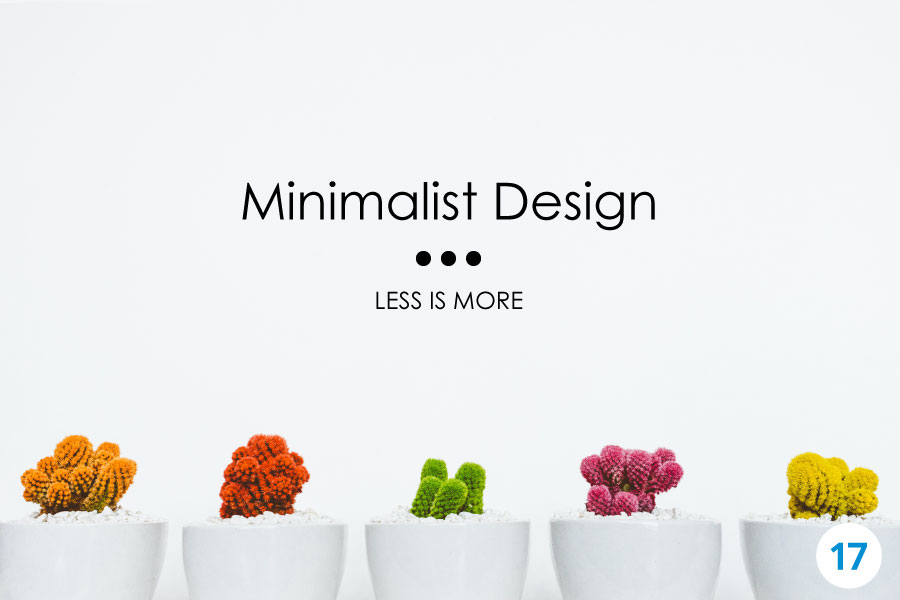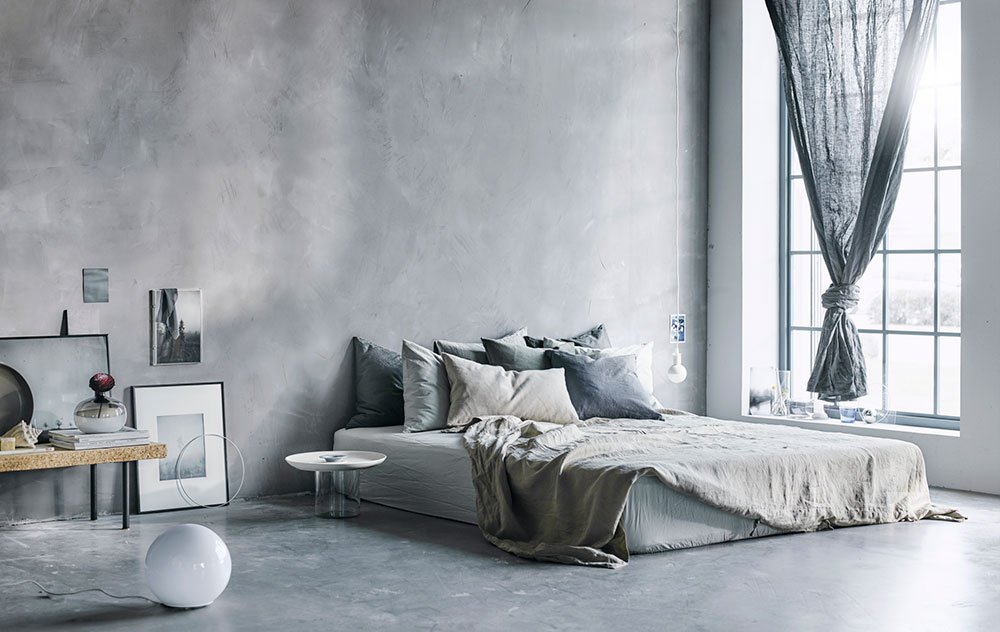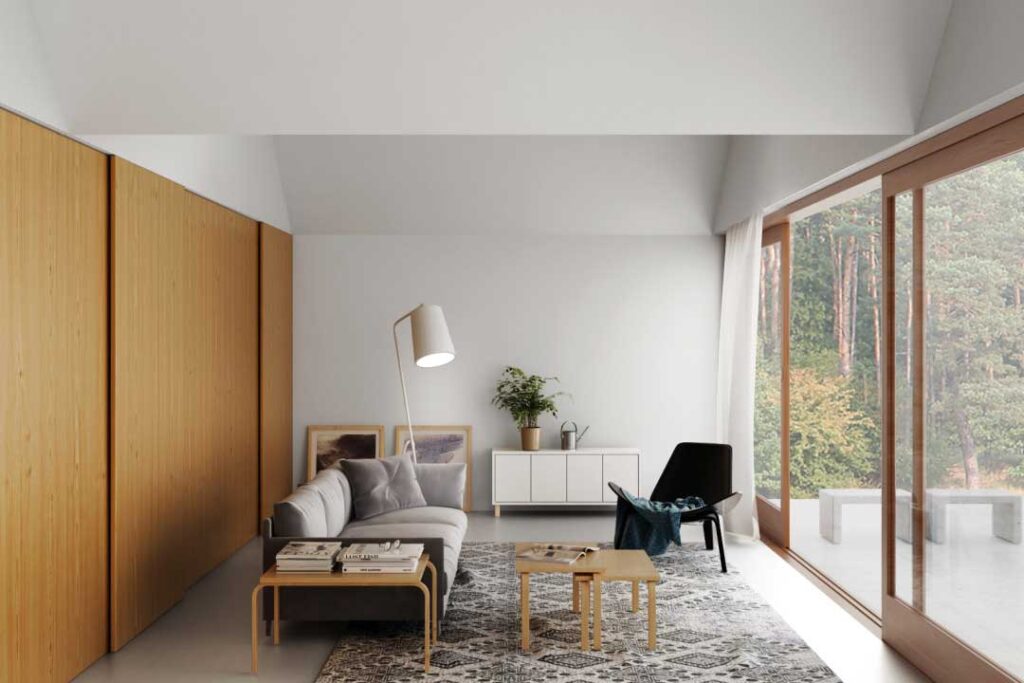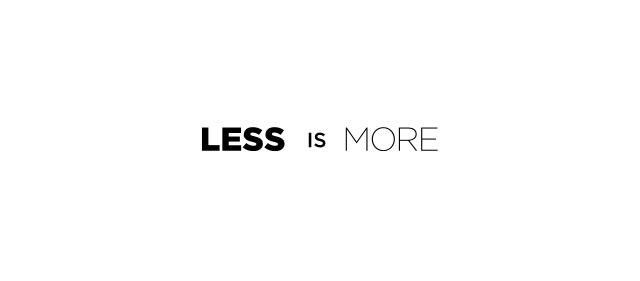
In this article, you will learn about the essentials of minimalist design and why the principle of “less is more” is so important. We will discuss how minimalist design can help create clean and clutter-free spaces, as well as how it can enhance the functionality and aesthetics of a place. By understanding the fundamentals of minimalist design, you will be able to apply these principles to your own living or work environment for a more peaceful and visually appealing space.

This image is property of www.go17blue.com.
Why Minimalist Design is Important
Minimalist design has become increasingly popular in recent years, and for good reason. With its focus on simplicity and clean aesthetics, minimalist design has the ability to create a powerful visual impact while enhancing the user experience. By stripping away unnecessary elements and emphasizing key features, minimalist design allows for a streamlined and elegant approach to both visuals and functionality.
Achieving Simplicity
One of the hallmark principles of minimalist design is simplicity. By reducing clutter and eliminating unnecessary embellishments, minimalist design brings focus to the essential elements of a design. This simplicity not only creates a visually pleasing aesthetic, but also contributes to a more intuitive and user-friendly experience.
When a design is cluttered with unnecessary elements, it can overwhelm the user and make it difficult for them to navigate and interact with the interface. By embracing minimalism, designers can declutter their designs, allowing the user to easily understand and engage with the content.
Enhancing User Experience
Minimalist design is not just about aesthetics, but also about improving the overall user experience. By prioritizing content and reducing distractions, minimalist design allows users to quickly and easily find the information they are looking for.
In a minimalist design, the focus is on the essentials. This means that the most important elements are given prominence, making it easier for users to identify and interact with them. By removing unnecessary elements and simplifying the design, users can navigate through the interface more efficiently and achieve their goals more effectively.
Creating Visual Impact
Contrary to the stereotype that minimalist design is boring or dull, it can actually create a powerful visual impact. By focusing on the essentials and utilizing negative space effectively, minimalist design can create a sense of balance and harmony that is visually striking.
A limited color palette and simple typography can also contribute to the visual impact of a minimalist design. By carefully choosing colors and fonts, designers can create a cohesive and visually appealing aesthetic that captures attention and leaves a lasting impression.
Key Principles of Minimalist Design
To achieve the desired simplicity and elegance of minimalist design, there are key principles that designers should adhere to. These principles include simplicity, whitespace, typography, and limited color palette.
Simplicity
The principle of simplicity is at the core of minimalist design. By removing unnecessary elements and focusing on the essentials, designers can create a clean and uncluttered design that is both visually appealing and user-friendly.
When creating a minimalist design, it is important to ask yourself: What is the main purpose of this design? What are the key elements that need to be emphasized? By answering these questions and eliminating anything that is not essential, designers can achieve simplicity in their designs.
Whitespace
Whitespace, also known as negative space, is an important aspect of minimalist design. By strategically using whitespace, designers can create a sense of balance and harmony in their designs.
Whitespace not only provides breathing space for the design, but also enhances visual hierarchy and improves readability. By giving elements room to breathe, designers allow users to focus on the important information and navigate through the interface with ease.
Typography
Typography plays a crucial role in minimalist design. By choosing appropriate fonts and using them effectively, designers can emphasize text and improve readability.
In minimalist design, it is important to choose fonts that are simple and clean, yet have personality. Fonts with excessive ornamentation or complex designs can detract from the overall simplicity of the design. By using typography effectively, designers can guide the user’s attention and convey information clearly and effectively.
Limited Color Palette
Another key principle of minimalist design is a limited color palette. By using a restricted range of colors, designers can create visual harmony and increase focus on the essential elements.
A limited color palette can also help in conveying meaning and creating a cohesive visual identity. By carefully selecting colors that complement each other and align with the design’s purpose, designers can create a visually pleasing and memorable design.
Importance of Simplicity in Minimalist Design
Simplicity is a fundamental aspect of minimalist design, and it is crucial for several reasons.
Reducing Clutter
One of the main advantages of minimalist design is its ability to reduce clutter. By eliminating unnecessary elements and focusing on the essentials, designers can create a clean and uncluttered design that is visually pleasing and easy to navigate.
Cluttered designs can overwhelm the user and make it difficult for them to find the information they are looking for. By embracing simplicity, designers can create a more intuitive and user-friendly experience, allowing the user to quickly and easily find what they need.
Focusing on Essential Elements
In minimalist design, the focus is on the essential elements. By removing unnecessary elements, designers can draw attention to the key features and messages they want to convey.
By prioritizing the important elements and removing distractions, minimalist design allows users to focus on what truly matters. This helps in delivering the intended message or functionality more effectively.
Improving Readability
Readability is an important aspect of any design, and minimalist design can greatly enhance it. By simplifying the design and using clean typography, designers can ensure that the content is legible and easy to read.
In cluttered designs, readability can be compromised by the presence of too many elements or excessive visual distractions. By embracing simplicity, designers can improve readability, making it easier for users to comprehend the information and interact with the design.
Streamlining User Interaction
Minimalist design also streamlines user interaction by removing unnecessary steps and simplifying processes. By focusing on the essential features and minimizing visual distractions, designers can create a user experience that is efficient and intuitive.
By reducing the number of elements and steps required for a user to complete a task, minimalist design allows for a more streamlined and enjoyable user experience. This can lead to increased user satisfaction and higher conversion rates.
Utilizing Whitespace Effectively
Whitespace, or negative space, is a powerful tool in minimalist design. It not only provides breathing space for the design, but also enhances visual hierarchy and improves readability.
Enhancing Visual Hierarchy
Whitespace can be used to create a visual hierarchy by emphasizing certain elements and de-emphasizing others. By giving elements more or less whitespace, designers can guide the user’s attention and communicate the relative importance of different elements.
For example, by giving a headline more whitespace, designers can make it stand out and draw the user’s attention. This helps in creating a clear and intuitive user interface where users can easily identify the most important information.
Improving Readability
Whitespace also plays a crucial role in improving readability. By giving text enough space to breathe, designers can ensure that it is legible and easy to read.
In cluttered designs, text can become illegible or visually overwhelming. By using whitespace effectively, designers can separate text from other elements and make it more readable, enhancing the overall user experience.
Providing Breathing Space
Whitespace also provides breathing space for the design, giving it a sense of balance and harmony. By allowing elements to have some space around them, designers can create a design that is visually pleasing and easy on the eyes.
Whitespace can also help in preventing the design from feeling crowded or overwhelming. By strategically using whitespace, designers can create a design that is visually appealing and inviting to the user.

This image is property of i1.wp.com.
Importance of Typography in Minimalist Design
Typography is a key element of any design, and it plays a critical role in minimalist design. By choosing appropriate fonts and using them effectively, designers can emphasize text and improve readability.
Choosing Appropriate Fonts
In minimalist design, it is important to choose fonts that align with the overall aesthetic and purpose of the design. Fonts should be simple and clean, yet have personality.
Fonts with excessive ornamentation or complex designs can detract from the overall simplicity of the design. By choosing appropriate fonts, designers can create a visually appealing and cohesive design that effectively communicates the intended message.
Emphasizing Text
Typography can be used to emphasize text and draw attention to important messages or elements. By using different font sizes, weights, and styles, designers can create visual hierarchy and guide the user’s attention.
For example, a headline can be made more prominent by using a larger font size or a bold weight. This helps in creating a clear and intuitive user interface where users can easily identify important information.
Improving Readability
Typography also plays a crucial role in improving readability. By choosing legible fonts and using them appropriately, designers can ensure that the content is easy to read and understand.
In cluttered designs, readability can be compromised by the presence of too many elements or excessive visual distractions. By using clean and simple typography, designers can enhance readability, making it easier for users to comprehend the information and engage with the design.
Maintaining Consistency
Consistency is an important aspect of minimalist design, and typography plays a crucial role in maintaining it. By using consistent fonts throughout the design, designers can create a cohesive visual identity that is memorable and visually appealing.
By sticking to a limited number of fonts and using them consistently, designers can create a design that feels unified and harmonious. This helps in creating a positive user experience and reinforcing the brand or message behind the design.
Limits of a Minimal Color Palette
A limited color palette is another key principle of minimalist design. By using a restricted range of colors, designers can create visual harmony and increase focus on the essential elements.
Creating Visual Harmony
A limited color palette helps in creating visual harmony in a design. By carefully selecting colors that complement each other, designers can create a cohesive and visually appealing aesthetic.
Too many colors can create visual chaos and detract from the overall simplicity of the design. By using a limited color palette, designers can create a design that is visually pleasing and inviting to the user.
Increasing Focus
A limited color palette also helps in increasing focus on the essential elements of a design. By using color strategically, designers can draw attention to important messages or features and guide the user’s attention.
For example, a button can be made more prominent by using a contrasting color. This helps in creating a clear and intuitive user interface where users can easily identify and interact with important elements.
Conveying Meaning
Colors have the power to evoke emotions and convey meaning. By carefully selecting colors that align with the purpose and message of the design, designers can effectively communicate with the user on an emotional level.
For example, using warm colors like red or orange can evoke feelings of excitement or energy, while cool colors like blue or green can convey a sense of calmness or serenity. By using colors intentionally, designers can create a design that resonates with the user and effectively communicates the intended message.

This image is property of d3ui957tjb5bqd.cloudfront.net.
Balancing Minimalism and Functionality
While minimalist design focuses on simplicity and clean aesthetics, it is important to strike a balance between minimalism and functionality.
Prioritizing Content
In minimalist design, the content should always take precedence. By prioritizing the content and ensuring that it is easily accessible and easily digestible, designers can create a design that is both visually pleasing and functional.
In a minimalist design, it is crucial to ask yourself: What is the main content of this design? How can I present it in the most effective and efficient way? By answering these questions and prioritizing the content, designers can create a design that serves its purpose and meets the needs of the user.
Maintaining Usability
While minimalism can create a visually appealing design, it is important to ensure that it does not compromise usability. A design should be intuitive and easy to navigate, allowing users to achieve their goals with minimal effort.
Designers should carefully consider the user’s journey and make sure that the design facilitates their interaction with the interface. By maintaining usability, designers can create a design that is not only visually pleasing, but also functional and user-friendly.
Avoiding Excessive Restriction
While minimalism is all about simplicity and removing unnecessary elements, it is important to avoid excessive restriction. Too much minimalism can result in a design that is too bare or lacking in functionality.
By striking a balance between simplicity and functionality, designers can create a design that is visually appealing, yet still serves its purpose effectively. It is crucial to ensure that the design provides enough information and functionality for the user to successfully achieve their goals.
Minimalist Design in Logo and Branding
Minimalist design is particularly effective in logo and branding. By embracing minimalism, designers can create logos and branding materials that embody the core values of a brand and promote recognition.
Embodying Core Values
In logo and branding design, minimalism can help in distilling the essence of a brand into a simple and memorable visual representation. By focusing on the essential elements and using minimalist design principles, designers can create a logo that embodies the core values of a brand.
Minimalist logos are often clean, timeless, and versatile, making them suitable for a wide range of applications and ensuring that they stand the test of time.
Simplifying Visual Identity
Minimalist design can also simplify the visual identity of a brand. By removing unnecessary elements and focusing on the essentials, designers can create a visual identity that is consistent and cohesive across different platforms and applications.
A simplified visual identity allows for easier recognition and recall, making it easier for consumers to associate the brand with its products or services. By embracing minimalism, designers can create a visual identity that is memorable, impactful, and easily recognizable.
Promoting Recognition
Minimalist design is also effective in promoting recognition. By using clean and simple designs, designers can create logos and branding materials that are easily recognizable and memorable.
Minimalist logos often rely on simple shapes, typography, and limited colors to create a distinct visual identity. By focusing on the essentials and removing unnecessary details, designers can create a logo that stands out and captures the attention of the target audience.

This image is property of uploads-ssl.webflow.com.
Minimalist Design in Web and User Interface
Minimalist design is particularly well-suited for web and user interface design. By embracing minimalism, designers can create interfaces that improve user navigation, optimize loading speed, and enhance mobile responsiveness.
Improving User Navigation
Minimalist design simplifies user navigation by removing unnecessary elements and streamlining the interface. By prioritizing the most important elements and organizing them in a logical and intuitive way, designers can create a user interface that is easy to navigate and understand.
By reducing the number of distractions and unnecessary steps, minimalist design improves the user’s ability to find the information they are looking for and achieve their goals more efficiently.
Optimizing Loading Speed
In web design, loading speed is crucial. Minimalist design can help in optimizing loading speed by reducing the amount of content and visual elements that need to be loaded.
By removing unnecessary elements and using a limited color palette, designers can create a design that is lightweight and loads quickly. This not only improves the overall user experience but also contributes to better search engine rankings and increased website traffic.
Enhancing Mobile Responsiveness
With the growing importance of mobile devices, it is crucial for designs to be responsive and adapt to different screen sizes. Minimalist design is well-suited for mobile responsiveness as it focuses on simplicity and clean aesthetics.
By removing unnecessary elements and optimizing the layout for mobile devices, designers can create a design that is easy to navigate and interact with on smartphones and tablets. This contributes to a positive user experience and ensures that the design is accessible to all users, regardless of the device they are using.
Conclusion
Minimalist design is more than just a trend; it is a powerful approach to design that emphasizes simplicity and elegance. By focusing on the essential elements and removing unnecessary distractions, designers can create visually striking designs that enhance the user experience.
Throughout this article, we have explored the key principles of minimalist design, including simplicity, whitespace, typography, and limited color palette. We have also discussed the importance of simplicity in reducing clutter, focusing on essential elements, improving readability, and streamlining user interaction.
Utilizing whitespace effectively plays a crucial role in enhancing visual hierarchy, improving readability, and providing breathing space. Typography is an important aspect of minimalist design as it helps in choosing appropriate fonts, emphasizing text, improving readability, and maintaining consistency.
A limited color palette creates visual harmony, increases focus, and conveys meaning. Balancing minimalism and functionality is important to prioritize content, maintain usability, and avoid excessive restriction.
Minimalist design is effective in logo and branding by embodying core values, simplifying visual identity, and promoting recognition. In web and user interface design, minimalist design improves user navigation, optimizes loading speed, and enhances mobile responsiveness.
By embracing minimalist design principles, designers can create designs that are both visually appealing and functional. So, embrace the essentials of minimalist design and let less be more in your designs.

This image is property of babich.biz.
